Buying Guide for the Best Adult Thermometers
Choosing the right thermometer for adults is crucial for accurate and reliable temperature readings, which are essential for monitoring health. There are various types of thermometers available, each with its own set of features and specifications. Understanding these key specifications will help you make an informed decision based on your specific needs and preferences.TypeThermometers come in different types, including digital, infrared, and mercury. Digital thermometers are popular for their accuracy and ease of use. Infrared thermometers are non-contact and provide quick readings, making them ideal for minimizing the spread of germs. Mercury thermometers, though accurate, are less commonly used due to safety concerns. Choose a type based on your preference for ease of use, speed, and safety.
AccuracyAccuracy is a critical factor in choosing a thermometer, as it determines how reliable the temperature readings will be. Most digital and infrared thermometers offer high accuracy, typically within 0.1 to 0.2 degrees. For general home use, a thermometer with an accuracy of ±0.2 degrees is usually sufficient. If you need precise measurements for medical reasons, look for a thermometer with higher accuracy.
Response TimeResponse time refers to how quickly a thermometer can provide a reading. Digital thermometers usually take a few seconds, while infrared thermometers can give instant readings. If you need quick results, especially in a clinical setting or for restless patients, an infrared thermometer with a response time of 1-2 seconds is ideal. For home use, a digital thermometer with a response time of 5-10 seconds is generally acceptable.
Ease of UseEase of use encompasses how simple and convenient the thermometer is to operate. Features like a large display, backlight, and simple button controls can enhance usability. If you prefer a straightforward experience, look for a thermometer with intuitive controls and clear instructions. For those who may have difficulty reading small screens, a thermometer with a large, backlit display is beneficial.
Memory FunctionThe memory function allows a thermometer to store previous readings, which can be useful for tracking temperature changes over time. Some thermometers can store multiple readings, while others may only store the last reading. If you need to monitor temperature trends, choose a thermometer with a memory function that can store several readings. For occasional use, a basic model without memory may suffice.
Measurement SiteThermometers can measure temperature at different sites, including oral, rectal, ear, forehead, and underarm. Each site has its own advantages and considerations. Oral and rectal measurements are very accurate but may be uncomfortable for some users. Ear and forehead thermometers are non-invasive and quick but may be less accurate if not used correctly. Choose a measurement site based on your comfort level and the accuracy you require.
Hygiene and MaintenanceHygiene and maintenance are important for ensuring the thermometer remains clean and functional. Some thermometers come with disposable covers or are waterproof for easy cleaning. If you need to use the thermometer for multiple people, consider one with disposable probe covers or a non-contact infrared model. For personal use, a thermometer that is easy to clean with alcohol wipes or soap and water is sufficient.
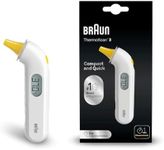
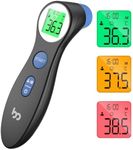

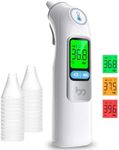
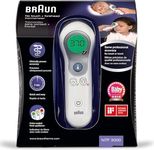

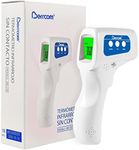

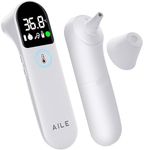
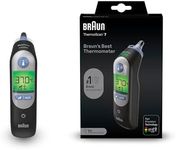
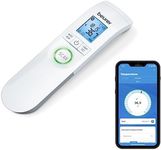
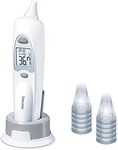


![[2019 Upgrade] Kinsa Smart Ear Digital Thermometer for Fever - Accurate, Fast, Medical Infrared Termometro for Baby, Kid, Adult - FDA Cleared for Body Temperature Readings - Upgraded for Best Accuracy](https://images-proxy.bestreviews.guide/wXriaLGv-s0br1lPKMEzwZbPFG4=/0x150/https://m.media-amazon.com/images/I/41ChepS3WuL._AC_CX679_.jpg)
